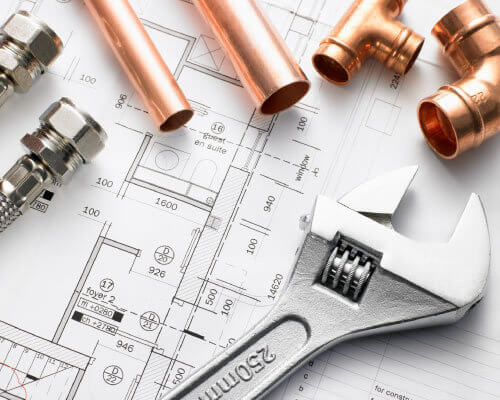20 Easy Plumbing Tips

Sinks
Adding an Aerator to your Faucet will cut down on your water consumption of hand washing up to 50%.
Throw away all the table leavings you can before resorting to the garbage disposal. Bones, meat and other fibrous articles of food cannot be properly ground and can damage the disposal.
Always run water when using the garbage disposal and never fill the disposal before turning it on.
Fats and Oils, when poured down the sink, will solidify in sink pipes and clog. Instead dump them into receptacles such as empty tin cans, wait for them to solidify and throw them out.
Toilets
Sink plungers have flat bottoms. Toilet plungers are conical so they can form a seal on the toilet’s trap opening. If you can’t plunge it, a toilet auger can be used before calling a plumber.
If you children flush toys or hard object, you can suck them out with a shop vacuum.
The initial flush that causes a clog will not cause you toilet to overflow. The tank does not hold enough water to overflow the bowl. If you let it sit, the clog will typically allow the water to pass through slowly so you can investigate the issue. Do not attempt to flush the toilet again before addressing the clog or you toilet will overflow.
Trickling toilets are most often caused by a poor tank flap. Flappers should be replaced once a year to ensure proper sealing.
When your toilets begin to gurgle after flushes, you line to the sewer or your main sewer line is becoming clogged due to debris. Call a plumber to investigate before everything begins to backup.
When plunging a sink or bathtub, plug up the overflow hole to achieve a proper seal.
Avoid dumping hot water into your toilet bowl, as the heat change can crack the bowl.
Clean the inside of your toilet tank at least once a year and inspect the tank flush and refill system.
Sump Pumps
Test your sump pump today, every six months, and before your big rainy or flood-watch season. You don’t want to find out your have a broken pump during the first thunderstorm. If you have a backup pump, test it as well. If it doesn’t work, troubleshoot it.
Clean your sump pump.
Place a high water alarm located next to your basement drain. This will alert you, day or night, to potential basement flooding before it gets out of hand.
Employing a second or backup pump alongside the first will curb disasters when one of your pumps overheats or breaks during a large storm. This secondary pump should be battery operated in the event of a power outage.
Winter
Disconnect and drain all your garden hoses. A connected garden hose can freeze and create pressure that backs up into your home, leading to a potential leak or burst within your internal plumbing.
Never turn off your heat when the temperature is 32 or below outside and you’re using water inside. Your pipes will freeze, burst and flood your home.
The first sign of a frozen pipe is poor water pressure. If your toilet takes a long time to fill or your sink seems slower than normal, check your pipes for freezes.
A frozen pipe can be addressed with a common hair dryer. If your pipes are frozen solid and ready to burst, call a professional immediately.
If you’re leaving home for the winter months
- Turn off the water supply to your home, either at the street level or in your basement to prevent frozen pipes from bursting and flooding your home.
- Once the water is off, open/turn on all your faucets. Leave them open/on for the duration of your absence.
- Once the water is off, drain your hot water heater, via the drainage spout at the base of the tank.
- Once the water is off, remove water from toilet tanks and bowls. This can be done by flushing twice.
- Add anti-freeze to sink drains, bath drains, toilet tanks and toilet bowls.
- If you choose to simply remove the sink’s p-trap, be sure to stuff a rag in the sewage end to prevent sewage fumes from entering your home.
